Black thrips pose a significant threat to horticultural crops, causing damage through feeding and transmitting plant viruses. Effective management strategies are crucial to safeguarding crop yields. In this blog, we delve into scientifically-backed approaches for tackling this menace. From biological controls to precision chemical applications, we explore methods that balance environmental sustainability with agricultural productivity.
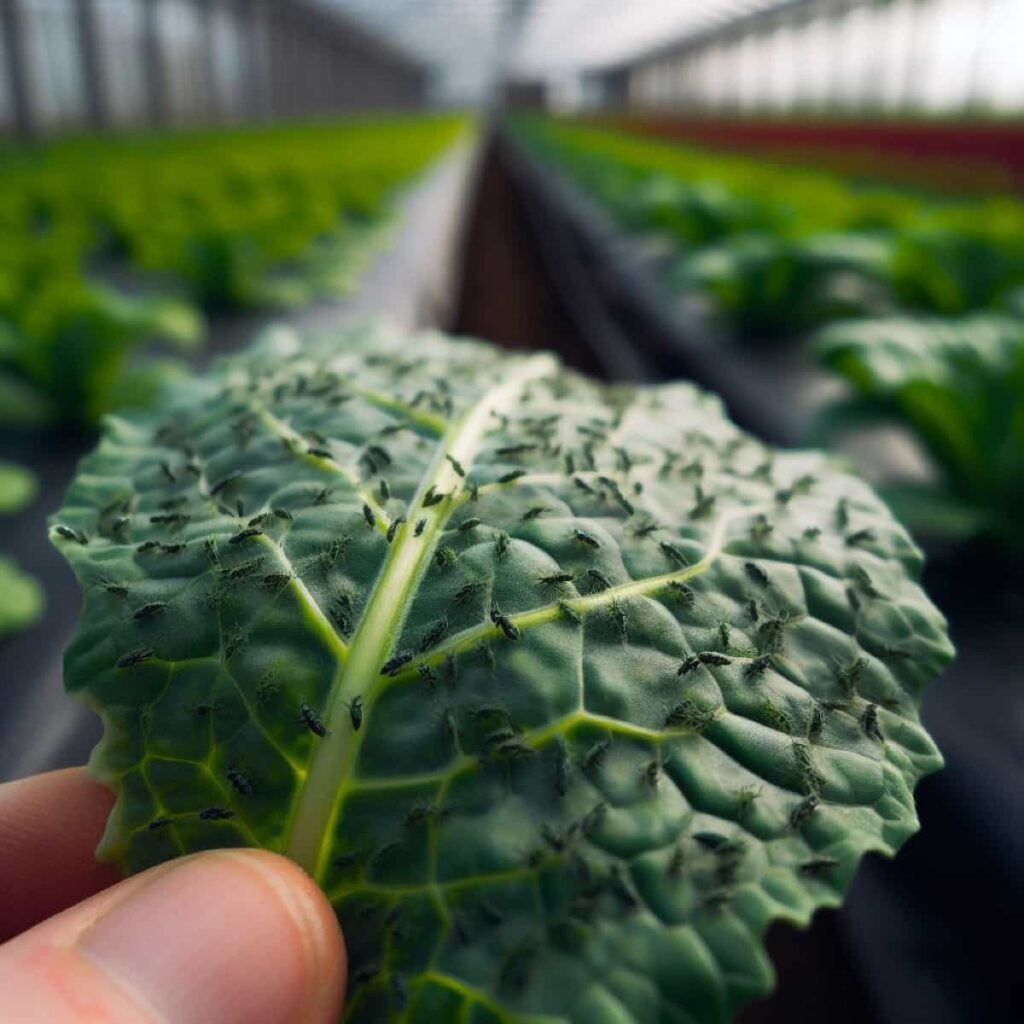
What Are Black Thrips?
Black thrips are tiny, winged insects that feed on plant sap and cause damage to various horticultural crops. They are also known as flower thrips, chilli thrips, or South East Asian thrips. They belong to the genus Thrips and the family Thripidae. There are several species of black thrips, but the most common and invasive ones are Thrips parvispinus and Scirtothrips dorsalis.
Black thrips, highly adaptable and infesting various crops, can reduce crop yield and quality by causing leaf curling, flower drop, fruit distortion, scarring, and discoloration. They can transmit plant viruses like tomato spotted wilt and chilli veinal mottle virus.
Life Cycle of Black Thrips
Black thrips have a complex life cycle that consists of six stages: egg, two larval stages, prepupa, pupa, and adult. The eggs are laid inside plant tissues such as leaves, flowers, or fruits. The larvae hatch after a few days and start feeding on the plant sap. The larvae molt twice before entering the prepupal stage. The prepupae and pupae do not feed and usually drop into the soil or leaf litter to complete their development.
The adults emerge after a few days and fly to find new host plants or mates. The adults can live for up to a month and lay up to 80 eggs in their lifetime. The duration of life cycle depends on the temperature and humidity. Under optimal conditions (25-30°C and 70-80% relative humidity), the life cycle complete in 10-15 days. However, under unfavorable conditions (below 15°C or above 35°C), the development can be delayed or stopped.
Damage and Symptoms of Black Thrips in Horticultural Crops
Black thrips are harmful insects that cause direct and indirect damage to horticultural crops by feeding on plant sap and transmitting plant viruses. They cause leaf curling, flower drop, fruit distortion, and discoloration, affecting plant growth, quality, and marketability. They can also transmit plant viruses like tomato spotted wilt virus and chilli veinal mottle virus, causing severe symptoms like stunting, wilting, mosaic patterns, necrosis, or death.
In case you missed it: Farm Diversification Strategies for Expanding Income Streams on Small Farms
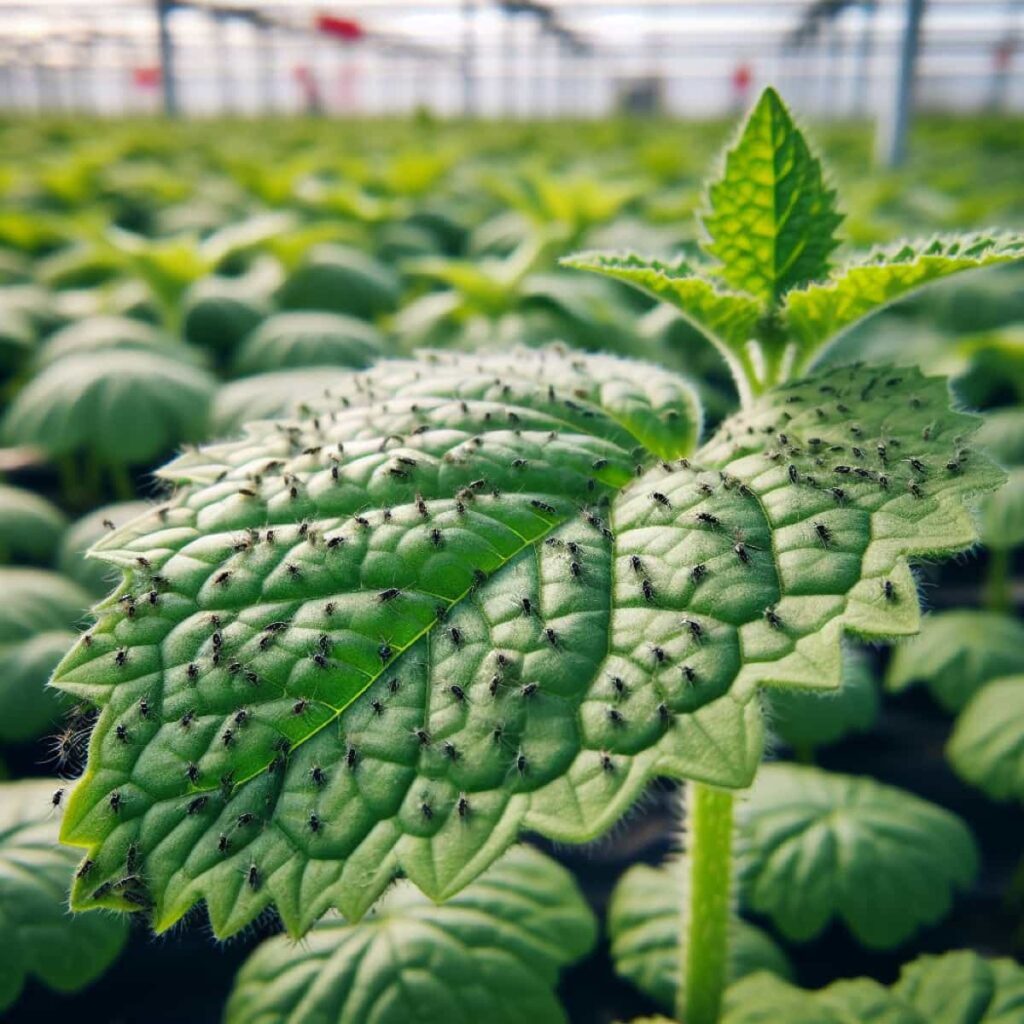
The damage and symptoms of black thrips vary depending on the crop type, variety, growth stage, and environmental conditions. Some crops are more susceptible to black thrips infestation and damage, making it crucial to address ensure the health and longevity of horticultural crops.
Management Strategies for Black Thrips in Horticultural Crops
Horticultural Crops Affected by Black Thrips
Black thrips are a significant threat to various crops, including fruits like citrus fruits, vegetables like tomatoes, and field crops like cotton, maize, soybeans, and sunflowers. Black thrips, which colonize the reproductive parts of plants and cause damage such as decreased flower and fruit numbers, subpar fruit development, discoloration, and decreased shelf life, are particularly harmful to chilli, a significant spice crop in India. This has led to significant losses for farmers, as black thrips can also increase susceptibility to fungal infections or rotting, affecting the overall quality and marketability of the crops.
Cultural Control Methods for Black Thrips
Emphasizing best practices, including scouting, sanitation, exclusion, and biological and chemical control, the program advises against immediate insecticide applications upon thrips detection. Regular scouting is vital, using methods like sticky traps or tapping plant material on a white sheet. Sanitation involves removing debris, weeds, and old flowers, while exclusion recommends screening greenhouse openings (<0.88 mm) to prevent thrips entry.
Biological Control Agents for Managing Black Thrips
Biological control agents (BCA) are effective for thrips management. Key agents include predators like Neoseiulus, Amblyseius, Orius, and Hypoaspis mites, nematodes like Steinernema feltiae, and fungi such as Beauveria bassiana and Isaria fumosorosea. Successful control depends on early BCA release, preferably before thrips reach the terminal or flower buds. Generalist BCAs like Amblyseius swirskii can sustain themselves on plant pollen. Prophylactic release ensures a robust predator population, enhancing thrips control.
Chemical Control Options for Black Thrips
Effective Preventive Measures
- Intercropping with agathi/maize/sorghum.
- Planting border crops.
- Employing trap crops like marigolds.
- Avoiding consecutive chili-sorghum cultivation.
- Using blue, yellow, and white sticky traps.
- Sprinkling water during seedling watering minimizes thrips multiplication. Neem oil (10000 ppm) application at 2 ml per liter acts on thrip eggs and serves as an antifeedant.
In case you missed it: How to Build a Cheap Hydroponic System: Low-cost and Budget Friendly Strategies for Beginners
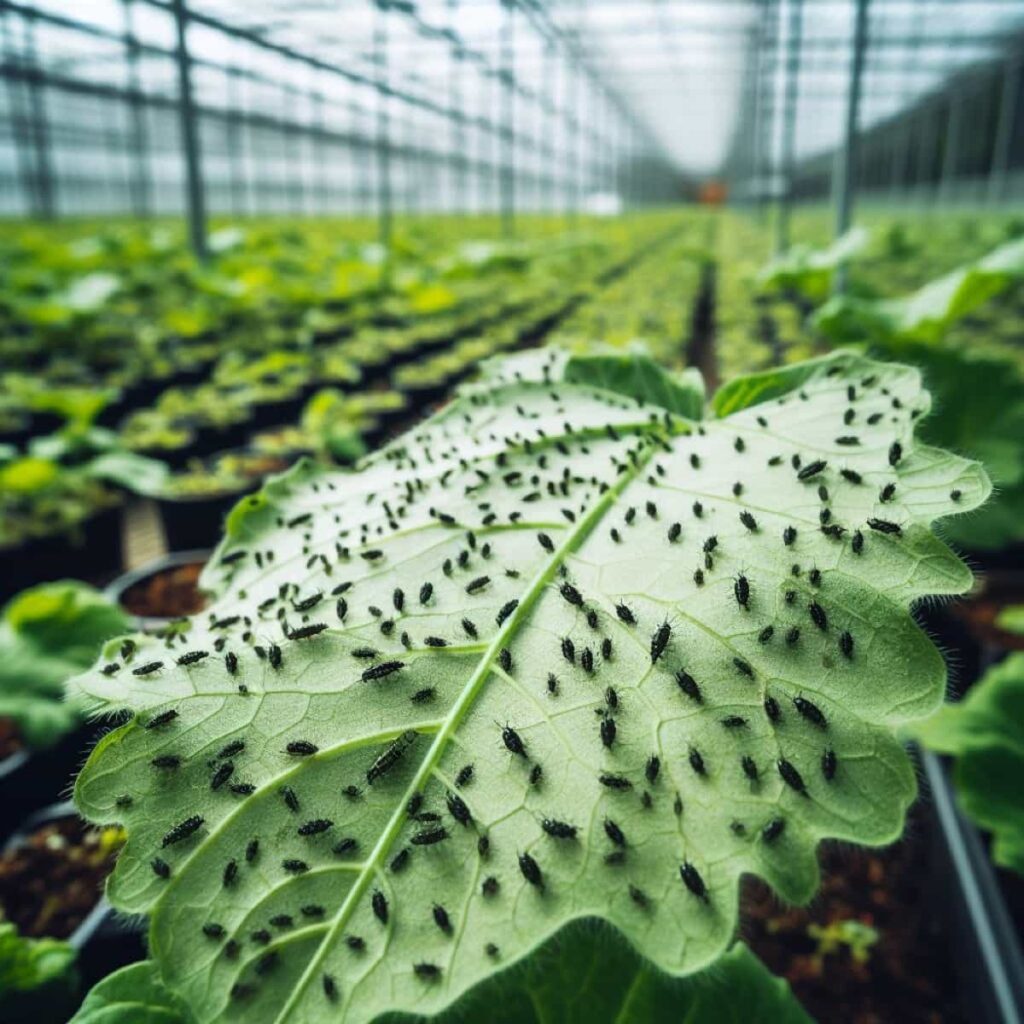
Chemical Controls
- Keefun Insecticide (15% EC of Tolfenpyrad).
- Delegate Insecticide (Spinetoram 11.7% SC).
- Gracia Insecticide (Fluxametamide 10% EC).
- Exponus Insecticide (Broflanilide 300 g/l SC).
These chemicals disrupt thrip feeding, with Delegate having minimal impact on beneficial insects. Gracia is environmentally friendly, and Exponus aids in Insecticide Resistance Management. EM 1 Insecticide (Emamectin Benzoate 5% SG) offers contact and stomach poisoning action with low residue, suitable for integrated pest management.
Integrated Pest Management (IPM) Approaches for Black Thrips
Integrated Pest Management (IPM) is a comprehensive approach that uses various control methods to manage black thrips effectively and environmentally friendly. It involves identifying the pest species, their life cycle, damage symptoms, and natural enemies. Monitoring the pest population density and dynamics is done using tools like traps, scouting, and thresholds.
Decision-making is made based on the pest status, crop status, and economic and environmental factors. The appropriate control methods are implemented based on the situation and IPM principles. The effectiveness of these control methods is evaluated to measure their impact on the pest population, crop yield, and environment.
Host Plant Resistance and Tolerance to Black Thrips
Host plant resistance and tolerance are traits that allow plants to withstand or reduce damage from black thrips. These traits can be achieved through genetic improvement, which involves breeding plants with desirable genes that confer resistance or tolerance, such as those affecting plant morphology, chemistry, or physiology. Cultural manipulation, on the other hand, involves modifying the plant environment or management to enhance the expression of resistance or tolerance, such as adjusting planting dates, density, fertilizers, growth regulators, or pruning.
Monitoring and Detection Techniques for Black Thrips
Monitoring and detection techniques are essential for observing and identifying black thrips in chili crops. These techniques include visual inspection, tap sampling, sticky traps, and Molecular analysis. Visual inspection involves examining plants for signs of thrips presence or damage, such as silvering leaves, flower abortion, fruit deformation, or scarring.
Tap sampling involves tapping a branch or flower cluster to collect thrips, which can be counted using a magnifying lens or microscope. Sticky traps attract and capture adult thrips by placing them near the crop canopy, with the color determining the thrips species preference. Molecular analysis involves extracting DNA from thrips samples and amplifying specific regions using PCR, which can be sequenced or compared with reference DNA to identify the thrips species.
Environmental Management Practices to Reduce Black Thrips Infestations
- Intercrop with agathi/maize/sorghum for shade, inhibiting thrips growth.
- Plant 2-3 rows of sorghum/maize as border crops to restrict thrips movement.
- Use marigolds as trap crops between fields to minimize damage.
- Avoid consecutive chili cultivation after sorghum.
- Refrain from mixed cropping with onion and chili.
- Sprinkle water while watering seedlings to reduce thrips multiplication.
- Install 60-70 sticky traps/ha for mass thrips trapping.
- Apply neem oil (10000 ppm) at 2 ml/1 liter to target thrip eggs, acting as an antifeedant to limit crop damage.
In case you missed it: Major Pests and Diseases of Cassava: Prevention and Control Methods
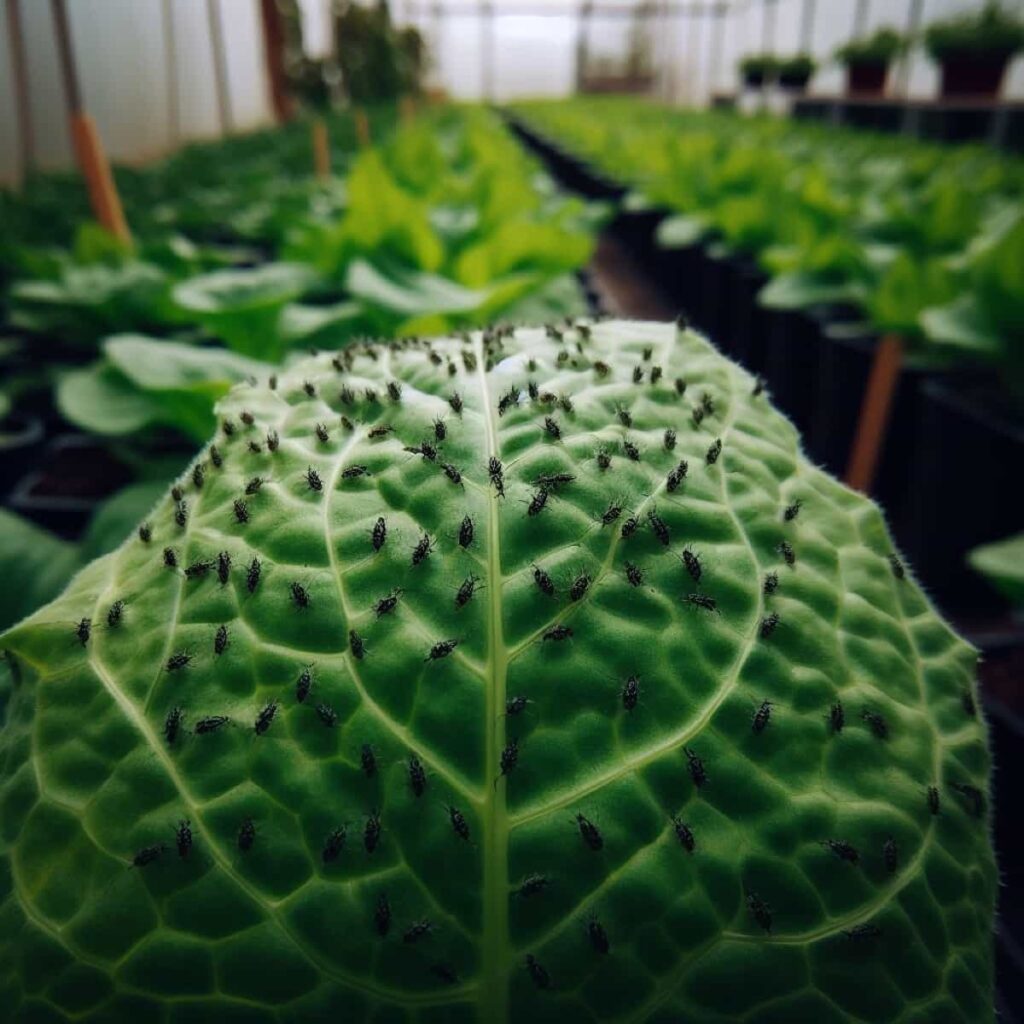
Use of Trap Crops and Barrier Methods for Black Thrips Management
Trap crops are plants that attract pests away from the main crop. They can be planted around or within the main crop to lure the pests and reduce their population. Some of the trap crops that can be used for black thrips management are marigold, sunflower, sesame, castor, mustard, and coriander.
These crops can also provide nectar and pollen for beneficial insects that can prey on or parasitize the thrips. Barrier methods are physical barriers that prevent or reduce the movement of pests into the crop. They can be natural or artificial structures that block the wind or create a physical obstacle for the pests. Some of the barrier methods that can be used for black thrips management are insect screens, reflective mulches, sticky traps, and intercropping.
Insect screens are mesh nets that cover the crop and exclude the thrips from entering. Reflective mulches are shiny materials that reflect light and repel the thrips from landing on the plants. Sticky traps are adhesive surfaces that trap the thrips when they come in contact with them. Intercropping is planting different crops together to create diversity and confusion for the pests.
Application Timing and Frequency for Controlling Black Thrips
The timing and frequency of applying any pest management method are crucial for its effectiveness and efficiency. For black thrips management, it is important to monitor the pest population regularly and apply the appropriate method at the right time and interval. The pest population can be monitored by using yellow sticky traps or by inspecting the plants for signs of damage or infestation.
The threshold level for black thrips management is 5-10 thrips per leaf or 10-15% damaged leaves. The application timing and frequency of any pest management method depends on several factors, such as the pest life cycle, the crop stage, the weather conditions, and the method’s efficacy. For example, cultural methods like crop rotation, sanitation, and resistant varieties should be applied before planting or at the early stage of crop growth.
In case you missed it: Pests Affecting Tomato Crops at Flowering Stage: Symptoms, Control, and Prevention
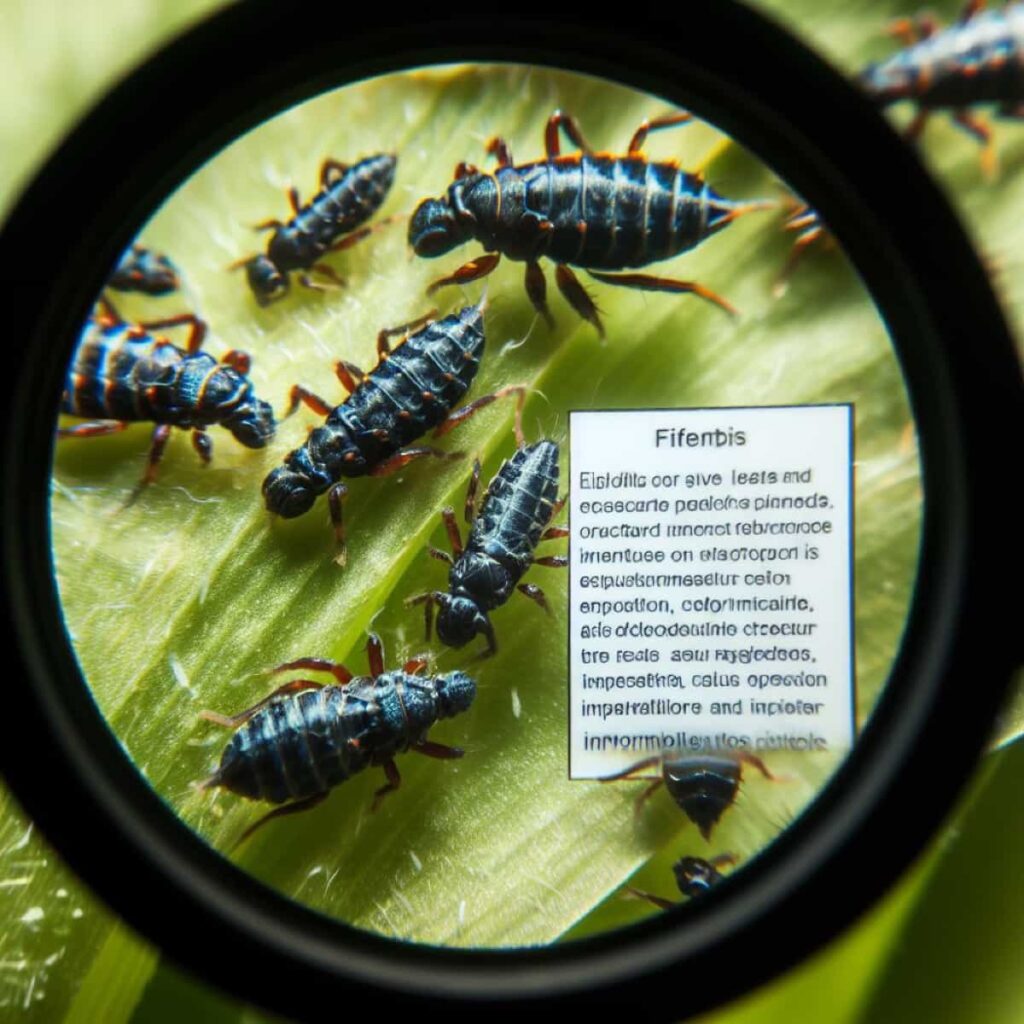
Physical methods such as insect screens, reflective mulches, and sticky traps should be applied at the flowering stage or when the pest population reaches the threshold level. Biological methods such as predators, parasitoids, and biopesticides should be applied at regular intervals of the crop season. Chemical methods such as insecticides should be applied as a last resort when other methods fail or when the pest population exceeds the economic injury level.
Impact of Weather Conditions on Black Thrips Population Dynamics
Weather conditions influencing the population dynamics of black thrips. Temperature, humidity, rainfall, wind speed, and light intensity affect the development, reproduction, survival, dispersal, and behavior of black thrips. Generally, black thrips prefer warm, dry, and sunny conditions for their optimal growth and activity. They are more active during the day than at night.
Temperature affects the rate of development and reproduction of black thrips. The optimum temperature range for black thrips is 25-30°C. At this range, they can complete their life cycle in 15-20 days and produce 50-100 eggs per female. At higher temperatures (>35°C), their development rate increases, but their survival rate decreases. At lower temperatures (<15°C), their development rate decreases, but their survival rate increases.
Humidity affects the survival and dispersal of black thrips. High humidity (>80%) reduces their survival rate due to fungal infections and increased predation. Low humidity (<40%) increases their survival rate but also increases their water loss and desiccation risk. Moderate humidity (40-80%) is favorable for their survival and dispersal. Rainfall affects the survival and dispersal of black thrips.
Heavy rainfall (>50 mm) reduces their survival rate due to drowning, washing off, or fungal infections. Light rainfall (<10 mm) increases their survival rate but also increases their dispersal rate due to wind gusts or splashing. Wind speed affects the dispersal and behavior of black thrips. High wind speed (>10 km/h) increases their dispersal rate due to passive flight or wind-borne transport.
Low wind speed (<2 km/h) reduces their dispersal rate but also increases their aggregation and feeding rate due to reduced disturbance. Light intensity affects the behavior and activity of black thrips. High light intensity (>1000 lux) increases their activity and feeding rate due to increased visibility and photosynthesis. Low light intensity (<100 lux) reduces their activity and feeding rate due to reduced visibility and photosynthesis.
Economic Considerations in Black Thrips Management
Black thrips management involves economic factors that influence farmers’ decision-making. These factors include cost-benefit analysis, economic threshold, economic injury level, and return on investment. The cost-benefit analysis compares the direct and indirect costs of pest management methods, such as labor, materials, and equipment, with the benefits of the method, such as yield increase and quality improvement. The economic threshold determines the pest population level at which the application of a pest management method becomes economically justified.
In case you missed it: Common Tomato Pests and Diseases: Prevention, Treatment, and Control Management
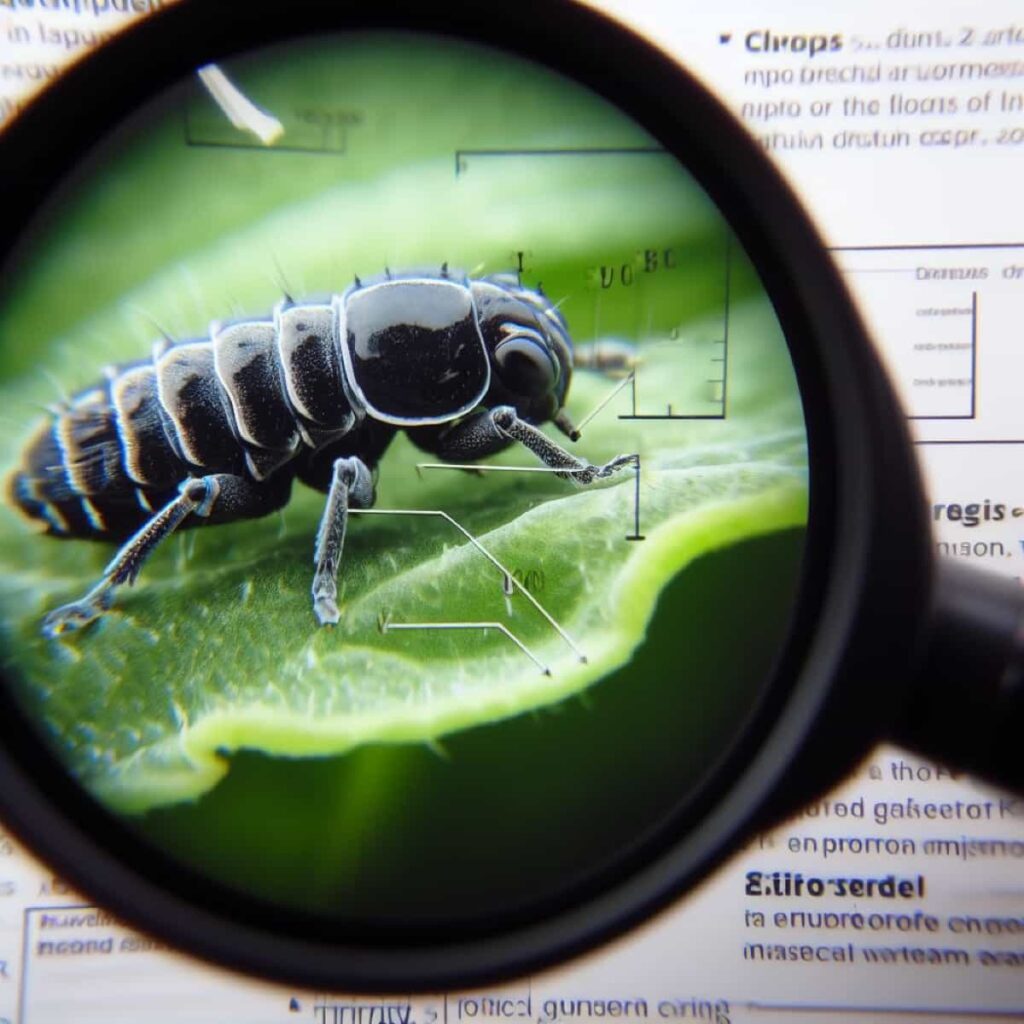
The economic injury level is the level at which the damage caused by the pest equals the cost of applying a pest management method. This level determines the tolerance for damage. The return on investment is the ratio of the net profit to the total investment of applying a pest management method. It is calculated by subtracting the cost of applying the method from the benefit and dividing it by the cost of applying the method. The return on investment helps determine the profitability of a pest management method.
Long-Term Sustainable Strategies for Black Thrips Management
Black thrips are a severe pest that affects chilli peppers and other crops, causing leaf curling, stunted growth, reduced yield, and virus transmission. To effectively manage this pest, farmers should adopt long-term sustainable strategies that combine cultural, biological, and chemical methods.
For example, you can use resistant or tolerant varieties of chili peppers, get rid of and destroy infected plants and debris, use sticky traps, insect screens, and reflective mulches, use natural enemies like predatory mites, lacewings, ladybugs, and parasitic wasps, use botanical pesticides like neem oil, pongamia oil, or soap solution, and only use chemical insecticides as a last resort and only after following the directions on the label.
Conclusion
Effective management of black thrips in horticultural crops demands a multi-faceted approach. From biological controls to strategic planting choices, proactive measures are essential. This holistic strategy ensures sustainable crop protection, safeguarding yields against thrip-induced threats.
- Crops Grown in Summer Season: Best Choices for Summer Gardening
- Organic Pest Control for Tomato Farming
- How to Maximize Sheep Farming Profit
- Broccoli Varieties: Choosing the Right Cultivars for Your Farm
- How to Raise Pigs in Your Own Backyard: A Comprehensive Guide
- Budget Friendly Sheep Shed Ideas: Cheap and Low-Cost Tips
- How Much Do Cattle Farmers Make: Revenue Streams in Cattle Farming
- Management Pests and Diseases in Your Cotton Field
- Sheep Farming Business Plan for Beginners
- Aquaponic Farming at Home: A Step-By-Step Guide
- Profitable Village Farming Business Ideas in 2024
- High-Yield Aquaculture: Fast-Growing Fish for Farming
- Effective Fish Pond Construction Techniques for Beginners
- Irrigation and Water Management in Pineapple Farming
- Blossom to Harvest: Mastering Flowering and Pollination in Papaya Farming
- Pig Fattening Essentials: From Selection to Sale for Beginners
- Raising Wagyu Cattle: A Complete Guide for Premium Beef Production
- Soil Types and Their Water Holding Capacity
- Optimizing Irrigation Schedules for Coconut Groves for Enhanced Yield
- Espresso Your Garden: Coffee Grounds for Healthier Acid-Loving Plants
- The Best Soil Mix for Snake Plants: How to Mix Your Own Snake Plant Soil
- Green Thumb Success: Expert Tips for Cultivating Greenhouse Beans All Year Round
- Bloom All Year Round: The Ultimate Guide to Indoor Hyacinth Care
- Eco-Friendly Gardening: How to Make Liquid Fertilizer from Kitchen Waste
- Ultimate Guide to Grow Anise in Pots: Explore Seed Propagation to Harvesting
- Guide to Raising Chester White Pigs: Discover Breed Facts to Growth Management
- Mastering the Elegance: The Ultimate Guide to Weeping Cherry Tree Care, Planting, and Maintenance
- Ultimate Guide to Planting Garlic in Grow Bags: Growing Strategies for Beginners
- How to Fix Spider Plant Leaf-Related Problems: Natural and Organic Remedies
- 10 Reasons Why Your Tulsi Plant is Shedding Leaves: Home Remedies and Solutions
- Optimizing Growth and Yield: The Advantages of Palm Bunch Ash Fertilizer
- Utilizing Neem Oil Extract as a Natural Pesticide for Hydrangea
- From Soil to Harvest: Various Ways in Which Farmers Can Use AI Tools
- Steps to Encourage and Induce Citrus Flowers: A Comprehensive Guide
- How to Fix Snake Plant Leaf-Related Issues: Natural and Organic Remedies
- Transform Your Garden into a Fragrant Oasis with Raat Ki Rani (Night Blooming Jasmine)
